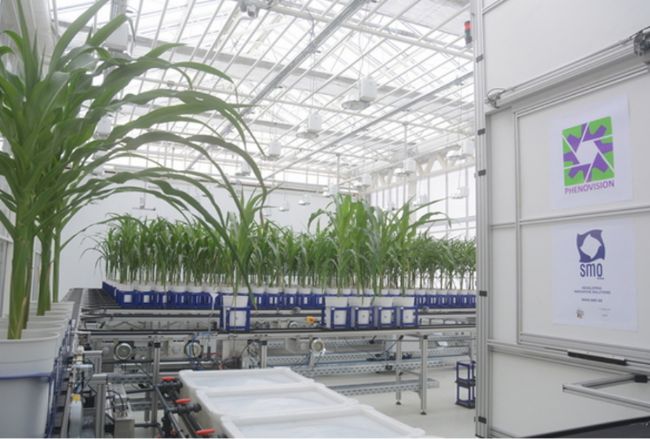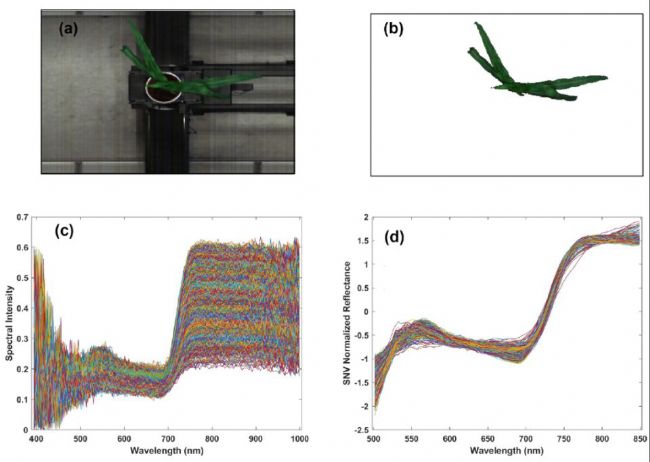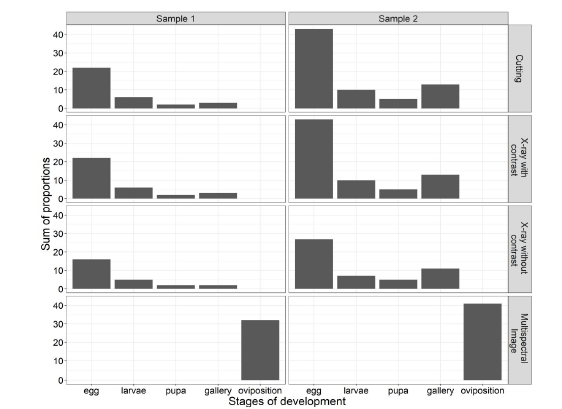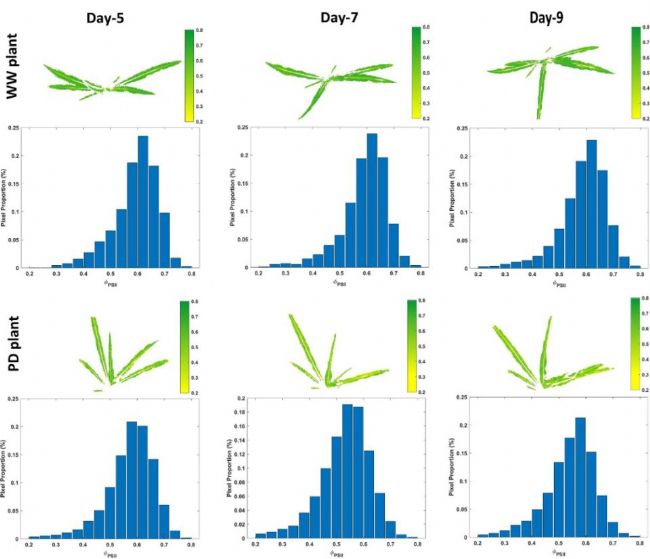利用WIWAM高光谱成像技术对植物生理特性进行无损分析
利用WIWAM高光谱成像技术对植物生理特性进行无损分析:以干旱胁迫为例
来自比利时的科学家,利用SMO公司构建的植物表型成像系统发表了题为Non-destructive analysis of plant physiological traits using hyperspectral imaging: A case study on drought stress的文章,文章发表于知名期刊Computers and Electronics in Agriculture Volume 195,April 2022, 106806。


WIWAM植物表型成像系统由比利时SMO公司与Ghent大学VIB研究所研制生产,整合了LED植物智能培养、自动化控制系统、叶绿素荧光成像模块、植物热成像模块、植物近红外成像模块、植物高光谱模块、植物多光谱模块、植物CT断层扫描分析模块、自动条码识别管理、RGB真彩3D成像等多项先进技术,以优化的方式实现大量植物样品——从拟南芥、小麦、水稻、玉米、大豆到各种其它植物的生理生态与形态结构表型成像分析,高通量植物表型成像分析测量、植 物胁迫响应成像分析测量、植物生长分析测量、生态毒理学研究、性状识别及植物生理生态分析研究等。
高光谱图像分析,用于植物早期应激症状的非破坏性视觉成像;
使用机器学习回归算法开发与水分胁迫相关的生理性状预测模型;
开发一种数据驱动的光谱分析方法,从植物的正常生长动态中量化与胁迫相关的现象;
在高通量植物表型分析平台环境下,通过对玉米植株水分胁迫的小规模研究,验证了数据驱动的方法
获取植物生理特性的传统方法是基于通过生化提取或剪叶的破坏性测量,从而限制了通量。随着高光谱成像传感器的发展,快速、无创、无损地测量植物的生理状态成为可能。在这项工作中,提出了一种从高光谱图像表征植物状态的非破坏性方法。提出了一种基于机器学习回归(MLR)算法的有监督数据驱动方法,用于生成四个目标生理性状的预测模型:水势、光系统II的有效量子产量、蒸腾速率和气孔导度。标准正态变量(SNV)转换反射光谱被用作建立回归模型的输入变量。研究了三种MLR算法:高斯过程回归(GPR)、核岭回归(KRR)和偏最小二乘回归(PLSR)作为建立目标生理性状预测模型的候选方法。验证结果表明,基于探地雷达算法开发的非线性预测模型对所有植物性状的估计精度最佳。将最佳预测模型应用于小型表型试验,以研究玉米植株的干旱胁迫响应。结果表明,早在干旱诱导3天后,干旱胁迫下的植株与正常生长动态下的植株的所有估计性状都存在显著差异。



Non-destructive analysis of plant physiological traits using hyperspectral imaging: A case study on drought stress
Highlights
The analysis of hyperspectral images for non-destructive visual mapping of early stress symptoms in plants.
The use of Machine Learning Regression algorithms to develop prediction models for water-stress related physiological traits.
The development of a data-driven spectral analysis method to quantify stress-related phenomena from regular growth dynamics in plants.
The validation of the data-driven method by a small-scale study of water-stress of maize plants in a high-throughput plant phenotyping platform setting
Abstract
Conventional methods to access plant physiological traits are based on destructive measurements by means of biochemical extraction or leaf clipping, thereby limiting the throughput capability. With advances in hyperspectral imaging sensor, fast, non-invasive and non-destructive measurements of a plant’s physiological status became feasible. In this work, a non-destructive method for the characterization of a plant’s status from hyperspectral images is presented. A supervised data-driven method based on Machine Learning Regression (MLR) algorithms was developed to generate prediction models of four targeted physiological traits: water potential, effective quantum yield of photosystem II, transpiration rate and stomatal conductance. Standard Normal Variate (SNV) transformed reflectance spectra were used as the input variables for building the regression model. Three MLR algorithms: Gaussian Process Regression (GPR), Kernel Ridge Regression (KRR), and Partial Least Squares Regression (PLSR) were explored as candidate methods for building the prediction model of the targeted physiological traits. Validation results show that the non-linear prediction models, developed based on the GPR algorithm produced the best estimation accuracy on all plant traits. The best prediction models were applied to a small-scale phenotyping experiment to study drought stress responses in maize plants. Results show that all estimated traits revealed a significant difference between plants under drought stress and normal growth dynamics as early as after 3 days of drought induction.





